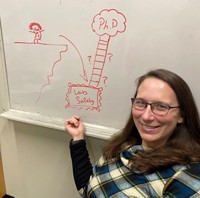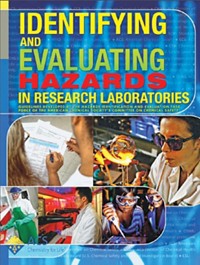Advertisement
Grab your lab coat. Let's get started
Welcome!
Welcome!
Create an account below to get 6 C&EN articles per month, receive newsletters and more - all free.
It seems this is your first time logging in online. Please enter the following information to continue.
As an ACS member you automatically get access to this site. All we need is few more details to create your reading experience.
Not you? Sign in with a different account.
Not you? Sign in with a different account.
ERROR 1
ERROR 1
ERROR 2
ERROR 2
ERROR 2
ERROR 2
ERROR 2
Password and Confirm password must match.
If you have an ACS member number, please enter it here so we can link this account to your membership. (optional)
ERROR 2
ACS values your privacy. By submitting your information, you are gaining access to C&EN and subscribing to our weekly newsletter. We use the information you provide to make your reading experience better, and we will never sell your data to third party members.
Industrial Safety
Movers And Shakers
To improve safety, Camille Peres couples psychology to process design
People are too complicated for one-size-fits-all communication, she says
by Jeff Johnson, special to C&EN
April 14, 2020
| A version of this story appeared in
Volume 98, Issue 16

“What engineer thought this would be a good idea?”
That’s a question S. Camille Peres hears often from industrial workers and laboratory researchers when she interviews them about the intricacies of the chemical processes they must control.
Peres, a professor in the Department of Environmental and Occupational Health at Texas A&M University, marries psychology and process design to dig deep into industrial and laboratory safety.
The interface between the human mind and a multistep process—even one that seems straightforward—can be rife with complexity, particularly if the task is unfamiliar and the instruction manual contains too little detail, is too complex, or simply does not exist, Peres notes. The kinds of frustrations her research subjects experience can be similar to ones we experience in daily life when trying to fix a child’s bike or replace a vehicle’s turn signal.
Peres’s research and teaching interests focus specifically on improving human-machine interfaces, especially in high-risk industrial settings. The machine could be a reactor in a petrochemical plant, a bench-scale test in an academic or industrial research lab, or a new web-based teaching program.
Vitals
▸ Hometown: Bellaire, Texas
▸ Current position: Professor, Department of Environmental and Occupational Health, Texas A&M University
▸ Education: BA, technical theater, University of Houston–Clear Lake, 1990; MA, psychology, University of Houston–Clear Lake, 1996; MA and PhD, psychology, Rice University, 2005
▸ Research interests: Human factors of procedure design and implementation, the ergonomic impact of software design, auditory display design, and fatigue assessment and mitigation for workers in high-risk industrial settings
▸ Motivation: “If we have the intellectual capability to get people into space or do ultradeepwater drilling, we also have the capacity to figure out how to do these things safely so people always go home safely.”
▸ Book recommendation: Set Phasers on Stun and Other True Tales of Design, Technology, and Human Error by Steven Casey
▸ Hobbies: Building Lego sets and collecting pop-up books
Peres is a faculty member and research leader at the Mary Kay O’Connor Process Safety Center at Texas A&M. The center focuses on industrial safety in chemical manufacturing–related industries. It is named for a chemical engineering supervisor killed in an explosion in 1989 at the Phillips Petroleum complex in nearby Pasadena, Texas.
Peres’s specialty is process safety manufacturing procedures in facilities such as petrochemical plants, refineries, and oil and gas drilling and processing operations. Her research team at the O’Connor center is also beginning to examine procedures in research laboratories, which have special needs, unique applications, and potentially high risks, she notes. “Academic labs can be dangerous, and it is something we should be getting into more,” Peres says.
Her work broadly falls under the umbrella of human factors engineering. “Most people only consider ‘human factors’ as a list of issues associated with the human experience,” she says—issues such as the roles of fatigue, long hours, and pressure to meet productivity goals or other expectations. But it also includes the tools or step-by-step procedures that can help or hinder a person’s work. Overall, the discipline focuses on using specific methods and theories to match the design of a job to the constraints and capabilities of the person doing the work, Peres says.
The foundation of her research, she explains, is based on cognitive psychology that examines how humans process information. “We get information into our brains through perception and sensitivity,” she says, “but how do humans process that information? What does the mind attend to and what does it ignore and why?”
She has found that one-size-fits-all communication does not work well as a tool to aid people in their work. People are more complicated than that.
For instance, she says, a novice or inexperienced person often wants to know everything about a new task. Consequently, procedure manuals need to reflect this need and detail. It is like a security blanket, she says.
But for experienced workers, all that verbiage may only get in the way. More experienced people, she has found, “are more likely to make errors if too many words are included in instructions for a process step.”
Instructions must therefore balance the needs of these two extremes. Peres predicts a future of digital-based procedures that can be transitioned from the novice to the expert seamlessly. “We need to leverage learning technology to improve lab and chemical processes,” she says.
Some of her other work has uncovered some disturbing facts about safety. In one case, her team examined how people respond to the familiar hazard warnings on lab equipment and certain chemicals—the common yellow- or orange-colored labels with a black exclamation point. The researchers found that the alerts are often ignored. Now, they are trying to find out why.
Peres and her colleagues are preparing for a new field study that uses small video cameras attached to workers’ hard hats to see how they use computer tablets holding procedures for loading chemicals into trucks and railcars. The operators usually handle more than one activity at a time, so the researchers will be able to observe not just how they follow one task but how they flip among several.
“With this, we can see how they actually are doing the tasks,” Peres says. “It is one thing to have someone tell you how she does something but quite another to be looking though the operators’ eyes to see what they are doing when using these tools.”
As Peres expands her research into laboratory work, her team is studying how operating and safety procedures should be designed and implemented in academic and industrial labs. As an example, the team is developing procedural steps for using gas chromatography/mass spectrometry analytical tools. The experiment will be a test bed for applying human factors analysis to a real piece of equipment with a complex series of operational steps in a laboratory setting.
Peres credits her background in theater for helping her develop skills necessary to be a successful researcher and leader.
“It is funny how much I have pulled from my theater training,” she says. “I was a tech theater person, a stage manager. I was back in the booth, directing people and using technology—the lighting, sound, and all the rest. It is where I first developed my affinity for technology.
“I also learned how to project my voice and to present myself, to stand tall, put my chin out, shoulders back, and appear confident, even if I was not,” she adds. She also had to work with people of many different disciplines—lighting experts, set designers, costume designers, and directors. “I had to get them all to pull together to produce the show. I had to learn each language.
“Those tools have helped me over the years to present my research to industry and to academia and to communicate to others all over the world. These skills are a huge part of my tool bag,” she says.
At the O’Connor center, she leads a multidisciplinary team of about 12 graduate students and faculty. The team includes chemical and other engineers as well as psychologists, sociologists, and other human factors experts. The team also collaborates with others in industry and in various departments of the university.
That diversity is rich and important, she says, because it provides strength and a safety net to ensure the researchers consider all elements of a particular problem. The center’s first director, the late Texas A&M chemical engineering professor M. Sam Mannan, stressed the necessity of bringing all potential contributors—engineers, psychologists, and anyone else with something to offer—to the safety planning table, Peres says.
Peres adds, “I love learning, and our collaborative research has been one of the joys in my career.”

Jeff Johnson is a freelance writer based in Washington, DC. A version of this story first appeared in ACS Chemical Health and Safety: cenm.ag/camilleperes.




Join the conversation
Contact the reporter
Submit a Letter to the Editor for publication
Engage with us on Twitter